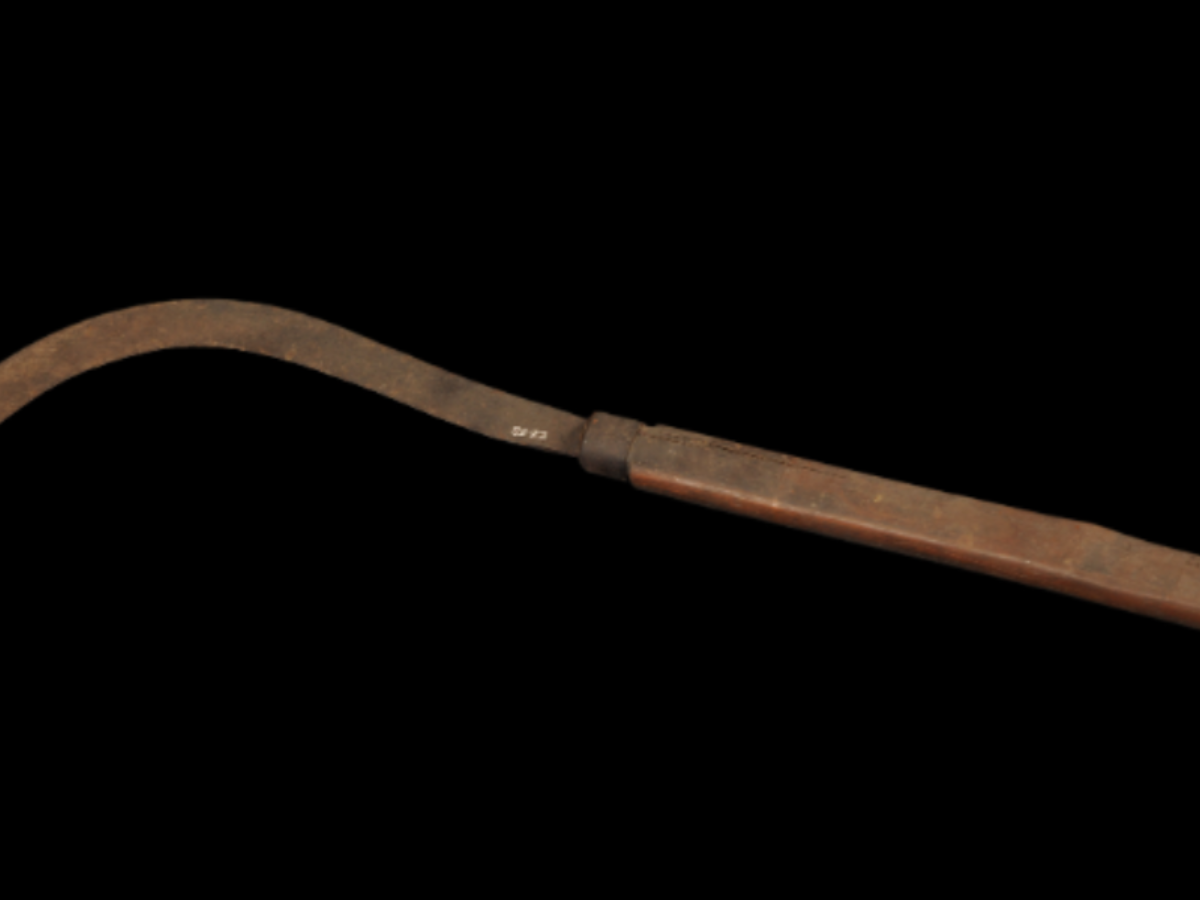State
Tribe Name
Art Type
short description
In the Rabha community, a large tribal group of Assam, Meghalaya, and West Bengal whose members have maintained a good communication with nature, the most revered cutting tool is used in agriculture, household works, and other daily activities. The cutting tool is usually made out of iron with a sharp edge for cutting wood, harvesting crops, and kitchen uses (Elwin, 1950)
The cutting tools are made in the Rabha tradition for several generations by local blacksmiths following customary iron-smelting procedures inculturated in Rabhas-from generation to generation. The design allows hand grips to be made of wood with firm gripping capacity for easy handling. The cutting tool is, until today, however, also considered to be of spiritual and cultural significance to the Rabha people (Das, 2015).
The Rabhas believe that cutting tools offered to the deities can act as protective and prosperous artifacts, hence sometimes using or offering them to their deities in propitiatory ceremonies. These instruments also served as self-defense tools long ago, thus standing as a mark of strength and survival in Rabha culture (Borah, 2018).
Even today, these traditional tools are used by the Rabhas for farming and household tasks so that the tradition and craftsmanship are kept alive. Even in an era of modernization, they hold fast to their traditional skills and cultural identity, assuring the transfer of knowledge from generation to generation.
The cutting tools are made in the Rabha tradition for several generations by local blacksmiths following customary iron-smelting procedures inculturated in Rabhas-from generation to generation. The design allows hand grips to be made of wood with firm gripping capacity for easy handling. The cutting tool is, until today, however, also considered to be of spiritual and cultural significance to the Rabha people (Das, 2015).
The Rabhas believe that cutting tools offered to the deities can act as protective and prosperous artifacts, hence sometimes using or offering them to their deities in propitiatory ceremonies. These instruments also served as self-defense tools long ago, thus standing as a mark of strength and survival in Rabha culture (Borah, 2018).
Even today, these traditional tools are used by the Rabhas for farming and household tasks so that the tradition and craftsmanship are kept alive. Even in an era of modernization, they hold fast to their traditional skills and cultural identity, assuring the transfer of knowledge from generation to generation.
Thumbnail

Filter Postion
Right
Filter Background
Off
Theme
Filter Header Image

content
Image

description
In the Rabha community, a large tribal group of Assam, Meghalaya, and West Bengal whose members have maintained a good communication with nature, the most revered cutting tool is used in agriculture, household works, and other daily activities. The cutting tool is usually made out of iron with a sharp edge for cutting wood, harvesting crops, and kitchen uses (Elwin, 1950)
The cutting tools are made in the Rabha tradition for several generations by local blacksmiths following customary iron-smelting procedures inculturated in Rabhas-from generation to generation. The design allows hand grips to be made of wood with firm gripping capacity for easy handling. The cutting tool is, until today, however, also considered to be of spiritual and cultural significance to the Rabha people (Das, 2015).
The Rabhas believe that cutting tools offered to the deities can act as protective and prosperous artifacts, hence sometimes using or offering them to their deities in propitiatory ceremonies. These instruments also served as self-defense tools long ago, thus standing as a mark of strength and survival in Rabha culture (Borah, 2018).
Even today, these traditional tools are used by the Rabhas for farming and household tasks so that the tradition and craftsmanship are kept alive. Even in an era of modernization, they hold fast to their traditional skills and cultural identity, assuring the transfer of knowledge from generation to generation.
The cutting tools are made in the Rabha tradition for several generations by local blacksmiths following customary iron-smelting procedures inculturated in Rabhas-from generation to generation. The design allows hand grips to be made of wood with firm gripping capacity for easy handling. The cutting tool is, until today, however, also considered to be of spiritual and cultural significance to the Rabha people (Das, 2015).
The Rabhas believe that cutting tools offered to the deities can act as protective and prosperous artifacts, hence sometimes using or offering them to their deities in propitiatory ceremonies. These instruments also served as self-defense tools long ago, thus standing as a mark of strength and survival in Rabha culture (Borah, 2018).
Even today, these traditional tools are used by the Rabhas for farming and household tasks so that the tradition and craftsmanship are kept alive. Even in an era of modernization, they hold fast to their traditional skills and cultural identity, assuring the transfer of knowledge from generation to generation.
Image Mode
landscape
promoted
Off
Verified
Off
